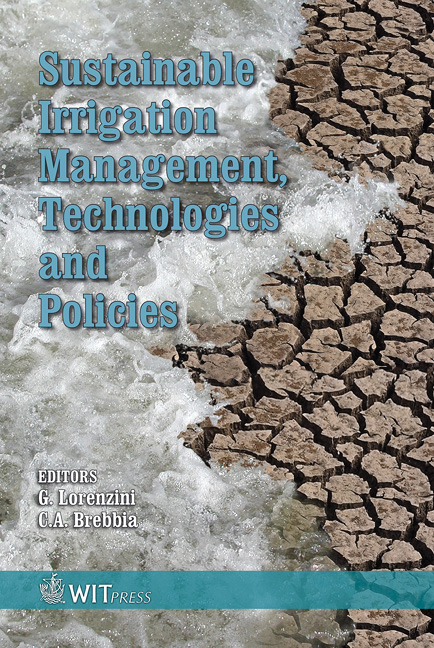The Contribution Of Water Accounting To Irrigation Efficiency
Price
Free (open access)
Transaction
Volume
96
Pages
10
Published
2006
Size
453 kb
Paper DOI
10.2495/SI060341
Copyright
WIT Press
Author(s)
P. Taylor & E. Harris
Abstract
Water accounting can be a key to optimising the yield from water stored in dams. In particular, where large numbers of water users are supplied from a headwork, accurate accounting of each user’s water during and between seasons and years can provide flexibility to water users and dam operators alike. With diversification of irrigation, creativity in managing risk, both for dam operation and water use, becomes more important as a means to facilitate irrigators’ varying and changing water requirements. In eastern Australia, parallel water accounting methods were developed by State governments, with slightly different features, related to the variety of climate, irrigation enterprise and levels of supply reliability suitable to the water users. The major rivers experience significant-to-extreme annual fluctuations in flow; consequently, water accounting methods developed to provide differential supply reliability from the same dam and foster economic productivity by providing irrigators with some choice in supply characteristics. Further, accounting has facilitated water saving between years and a degree of borrowing from future years, as well as reinforcing in the minds of irrigators the level of risk their choices reflect. This paper outlines the development of water accounting in Australia, the pre-requisites for its introduction, as well as its potential role and benefits for irrigation. Keywords: water allocation and distribution, dam operation, irrigation efficiency, sustainability, river management, water accounting, capacity sharing. 1 Introduction Irrigation schemes normally contain large numbers of water users, but the allocation and distribution of water is commonly managed uniformly and
Keywords
water allocation and distribution, dam operation, irrigation efficiency, sustainability, river management, water accounting, capacity sharing.





